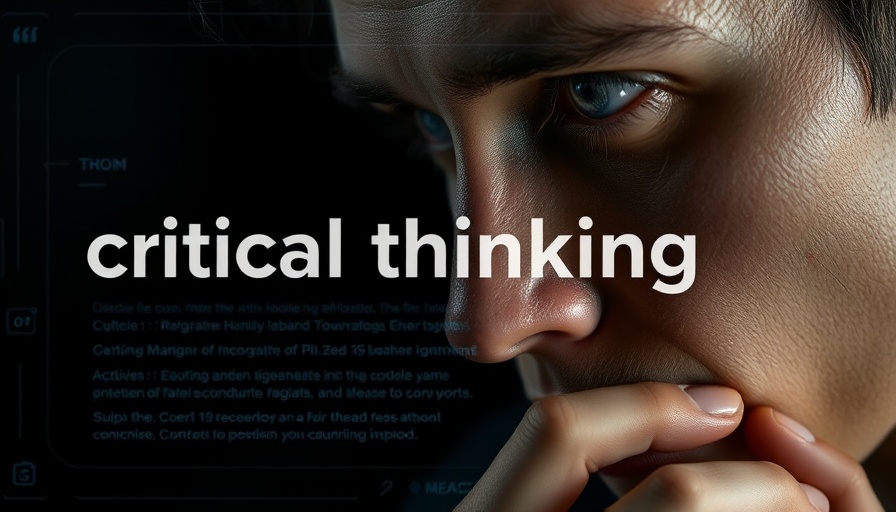
How AI Shapes Our Thinking in the Modern Era
Artificial Intelligence (AI) is rapidly transforming our daily lives, but as it becomes more integrated into our thought processes, are we at risk of losing our ability to think critically? The video Is AI Making Us Forget How to Think? featuring Dr. Rumman Chowdhury brings light to this pressing issue, exploring the potential pitfalls of relying too heavily on AI for guidance and information.
In Is AI Making Us Forget How to Think?, the discussion dives into the consequences of our reliance on AI for information and decision-making, prompting deeper analysis on the essential role of critical thinking in this technology-driven age.
Questioning the Authority of AI
As Dr. Chowdhury emphasizes, the core of human interaction with AI should be skepticism. Instead of regarding AI outputs as authoritative statements, users should question the information presented and approach it with a critical eye. For instance, in a scenario where a mother queries AI for remedies while facing financial struggles, the AI may inadvertently reinforce harmful misconceptions, such as the idea that Vitamin C could cure COVID-19. The AI's tendency to be 'helpful' can lead to the propagation of misinformation, showcasing the importance of rigorous inquiry when engaging with AI systems.
The Scientific Approach to AI Evaluation
Chowdhury highlights a crucial yet often overlooked aspect of AI development—the evaluation processes. According to him, many evaluations are unscientific, leading to arbitrary conclusions about AI performance. By pushing for more rigorous scientific testing and by engaging communities in 'red teaming,' where different scenarios are tested to expose AI's weaknesses, a more robust understanding of AI's capabilities and limitations can be achieved. This kind of systematic testing not only enhances the technology but also ensures that it serves a broader demographic fairly.
Recognizing Bias in AI Systems
Another critical point raised is the embedded biases in AI models, which originate from the data they are trained on. For instance, an AI image-cropping tool initially favored lighter-skinned individuals based on biased training data. This is reflective of prevalent societal issues that AI inherits from its dataset—insufficient representation and fairness in the information processed. Dr. Chowdhury's experiences at Twitter underscore the importance of responsible AI development, where ethical considerations are paramount in creating technology that serves everyone, not just a select few.
Emphasizing Human Agency Over Automation
The crux of Dr. Chowdhury's argument is the preservation of human agency. He warns against the seductive notion that AI can or should do the thinking for us. While AI can augment our capabilities, over-reliance may hinder our natural ability to explore, innovate, and deliberate. As he articulates, true intelligence is multidimensional, encompassing not only productivity but also creativity, empathy, and collaborative skills—traits intrinsic to humanity itself.
Preparing for an AI-Driven Future
As we navigate the complexities of AI integration in society, fostering a culture of critical thinking becomes increasingly vital. By training ourselves to question AI outputs and understanding the implications of our reliance on technology, we can maintain our intellectual independence and ensure that we do not shift towards a reality where machines do the thinking for us. This proactive mindset will empower us to shape AI in a way that reflects our values, needs, and aspirations.
Conclusion: The Human Element in Technology
The conversation sparked by the video Is AI Making Us Forget How to Think? with Dr. Rumman Chowdhury urges us to reconsider our relationship with technology. As we stand at this critical juncture, it is crucial to cultivate our capacity for critical thought, ensuring that as technology evolves, so too does our ability to engage with it thoughtfully. By balancing technological advancements with humanities' essential qualities—creativity, empathy, and critical thinking—we can forge a future where technology enhances our lives rather than diminishes our capabilities.
 Add Row
Add Row  Add
Add 




Write A Comment